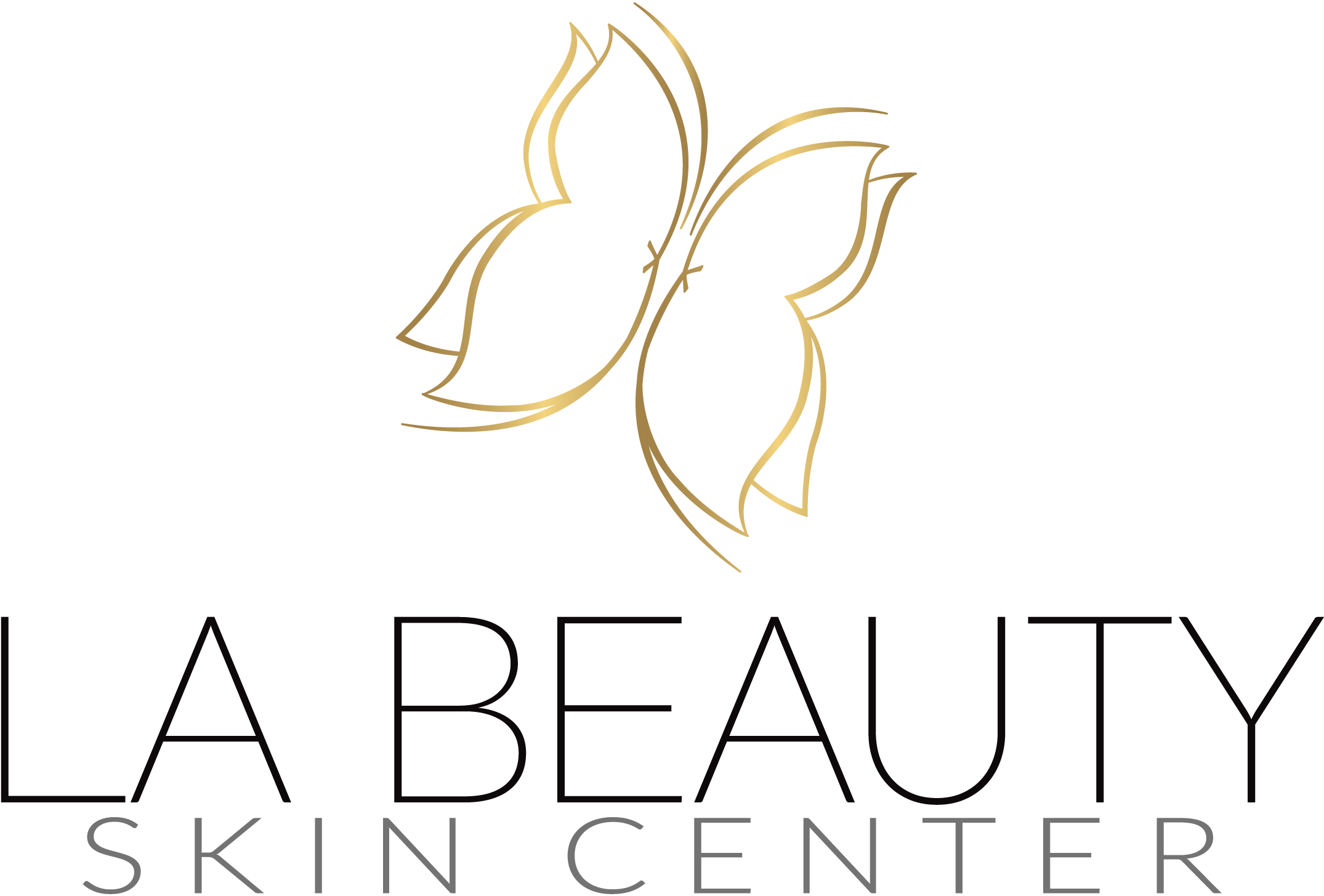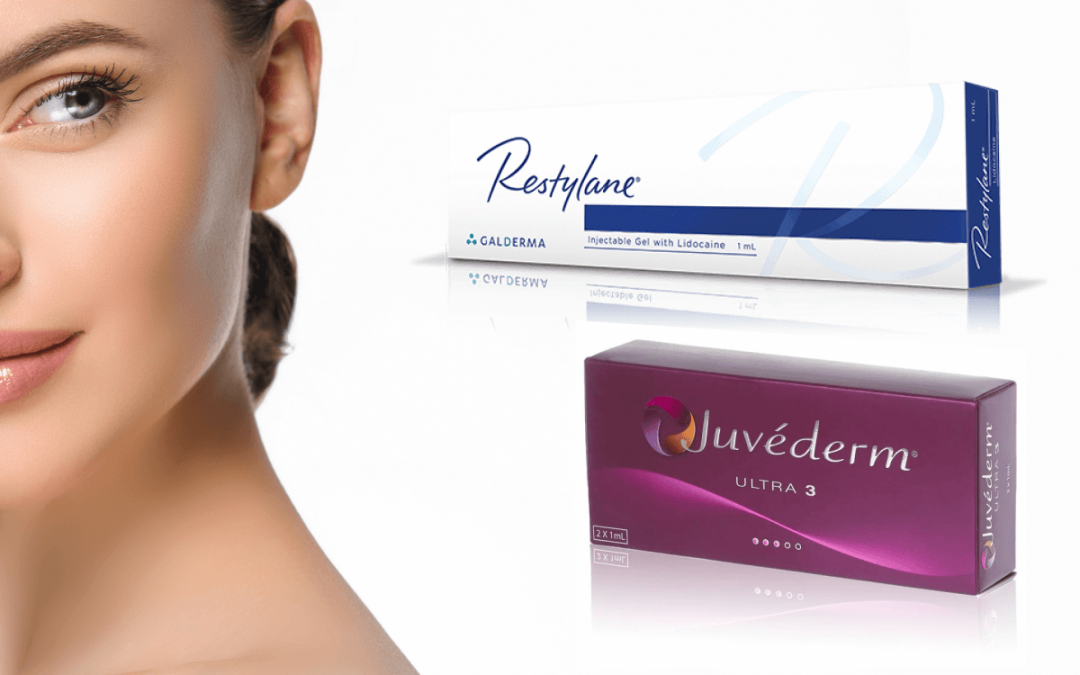Within the past few decades, there has been a tremendous increase in popularity of non-surgical aesthetic procedures, mainly injectable dermal fillers, to enhance and rejuvenate skin and facial features.
According to the Food and Drug Administration (FDA), injectable fillers are classified as medical devices that serve different purposes. Some of the most common uses of injectable fillers are providing facial volume, filling in wrinkles, sculpting facial features and restoring skin volume for a smoother, more youthful appearance. Most dermal fillers consist of hyaluronic acid, which is naturally present in skin and cartilage. It is very important to note that the injections need to be performed by a licensed medical professional.
To avoid any harm or damage to the skin and underlying soft tissues, it is recommended to trust only highly-experienced professional clinics and centers that have the license to perform injections. In this article we are going to discuss the differences between the two main families of dermal fillers as well as list the various types of injection procedures that LA Beauty Skin Center offers.
With the credibility, many years of experience and trustworthiness of LA Beauty Skin Center we’d like to share with you the reasons to consider choosing this center for skin-related anti-aging treatments and procedures.
Different Uses of Filler Injections
Regardless of your age, advanced aesthetic medicine gives the opportunity to redefine your looks. One way to do this non-surgically is with the use of dermal filler injections, which vary by product and by area of application. Some of the aesthetic modifications that these fillers offer are the sculpting and re-shaping of almost any feature of the face, including cheeks, nose, jawline, under eyes, and lips. The two main families of fillers that we present today, Restylane and Juvéderm, are mostly known to produce anti-aging and rejuvenating effects. Now let’s look at some of the specific cases where these dermal fillers are used.
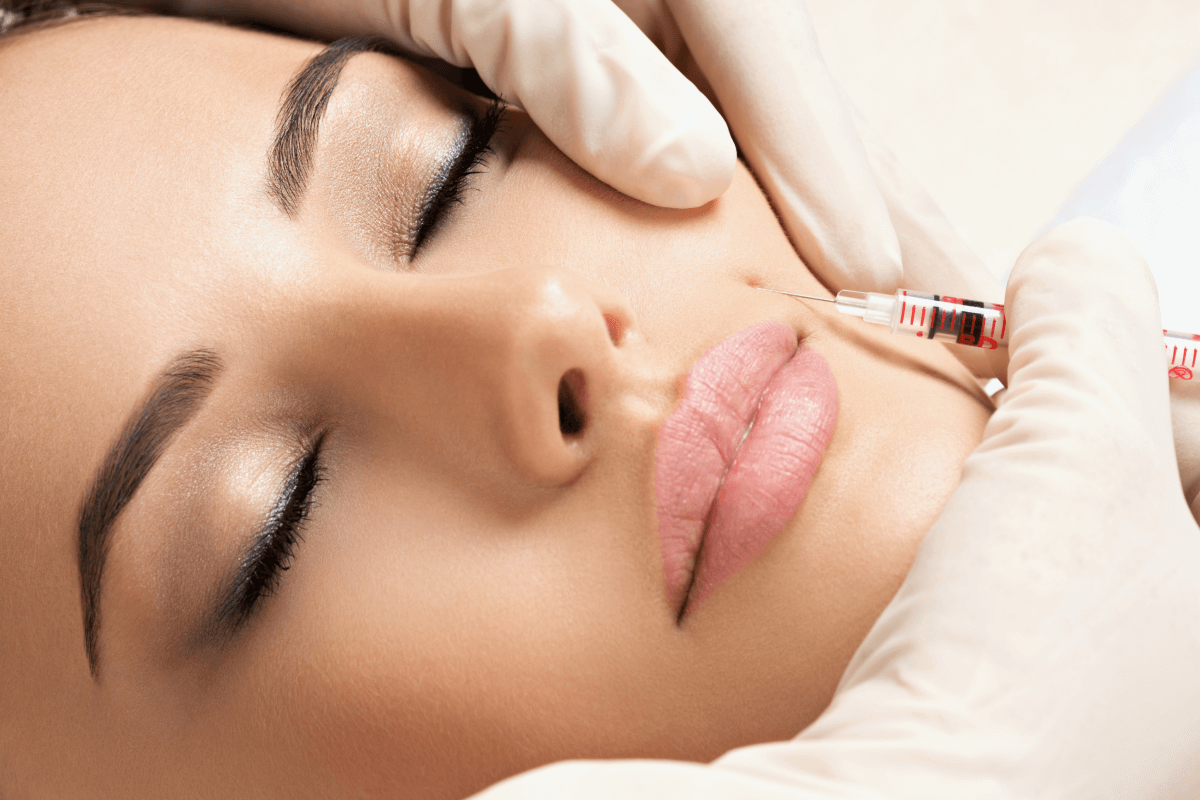
Lip augmentation is the most popular non-surgical procedure performed with dermal fillers.
The versatility of the HA-containing fillers allow experienced professionals to not only augment the lips, but change the shape, define the vermillion border and Cupid’s bow, and also change the height of the top lip. Over time, collagen production in our bodies slows down, which leads to fine lines, volume loss and thinning lips. However, hyaluronic acid-containing lip fillers, such as Restylane (Kysse, Defyne, Refyne) and Juvéderm (Ultra Plus XC), are highly effective for volumizing, re-shaping and re-contouring the lips.
The second most popular non-surgical procedure is jawline augmentation and enhancement: both for females and males. The chiseled jawline has become increasingly popular in the recent decade partially due to celebrities, such as Angelina Jolie, with her naturally sculpted strong jawline and models who achieved a similar look non-surgically, with dermal fillers.
Aside from the anatomical structure of the jawline that’s unique for each individual and, if desired, can be improved in proportion, definition and symmetry, there are common age-related changes such as softening of the contour, definition and volume of the jawline which makes it appear weak or creates sagging jowls. Whether it’s a subtle contouring, correction of the recessed chin or sculpting a chiseled jawline, the masterful and strategic placement of dermal fillers by an experienced professional can produce striking results. For the jawline augmentation thicker fillers, such as Juvederm Voluma or Restylane Lyft are preferred.
The non-surgical rhinoplasty has made it possible to achieve striking transformations with the use of dermal injectables. The shape and size of the nose can make a dramatic difference in the overall facial proportions and features. With dermal fillers an experienced medical professional can dramatically improve, straighten the nasal dorsal hump or elevate the droopy nose tip – called ‘the tinkerbell tip lift’. The dermal filler commonly used for the instant rhinoplasty is Restylane Lyft or Juvederm Voluma.
Although it’s a non-surgical procedure (performed without anesthesia within 15 minutes, with dermal fillers), resulting in an incredible transformation, it may have potential side effects. Hence, it’s imperative that it’s performed only by a highly experienced medical specialist.
Another application of dermal fillers is for cheek injections. One of the most prominent and universally attractive facial features are high cheekbones. Over time, due to the advancement of aesthetic medicine, it has become possible to augment, shape and contour the cheeks without any surgical procedures. Restylane Lyft or Contour and Juvederm Voluma are the go-to dermal fillers for this procedure.
Last but not the least is the under eye circle treatment or tear trough correction with fillers. Dark circles under the eyes are generally hyperpigmentation or periorbital blemishes combined with puffiness or hollows. It is important to mention that dermal fillers do not change the dark circles under the eyes. It visually improves the appearance of dark circles by elevating the hollowness under the eyes hence eliminating the shadowing. This results in a more rested & refreshed appearance. Since the eyes and surrounding areas are one of the most sensitive facial features, it is crucial to choose a certified clinic to perform such a procedure.
Now let’s look at the difference between Juvéderm and Restylane dermal fillers.
Comparing the Dermal Fillers: Restylane vs Juvéderm
The Juvederm and Restylane families of dermal fillers are comprised of Hyaluronic Acid-based injectables with different structural types and technology.
Both Restylane dermal fillers and Juvéderm injection fillers are hyaluronic acid-based and are fully compatible with human hyaluronic acid. Before exploring the difference between Restylane and Juvéderm, let’s briefly describe each of the fillers separately.
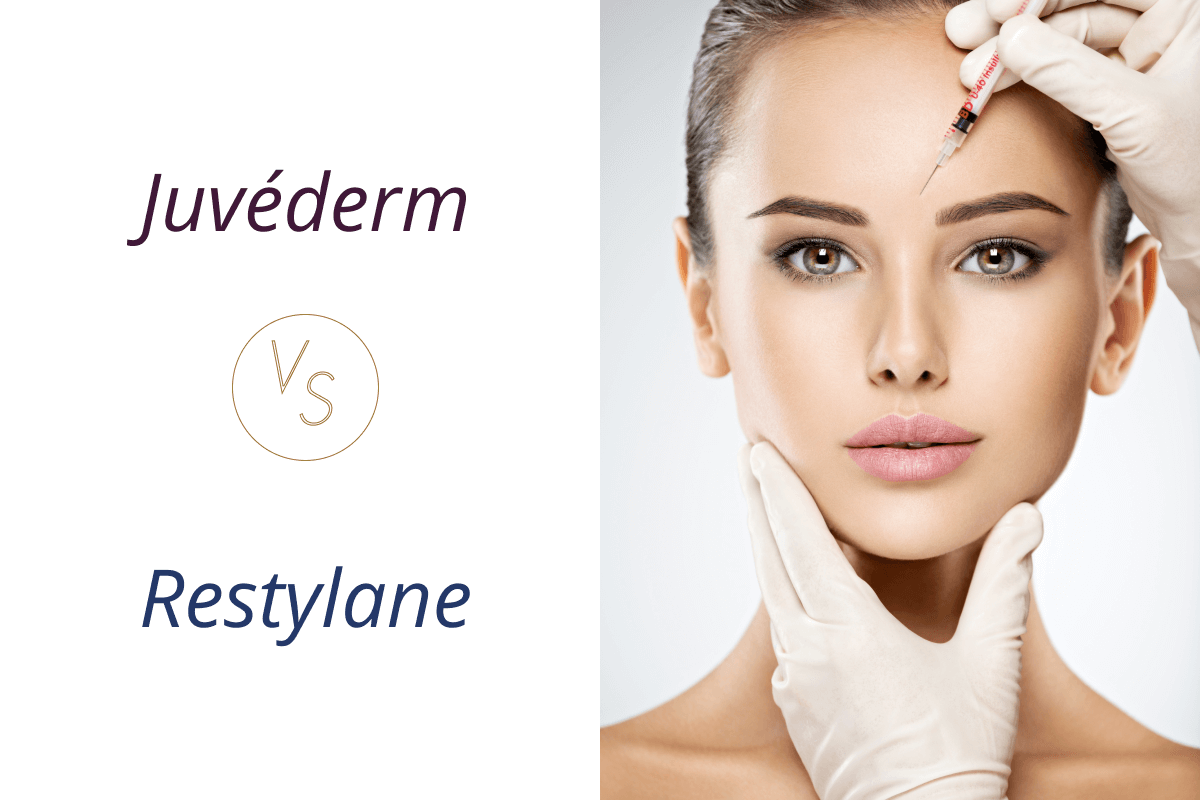
So, what is Restylane filler? Restylane is used for rejuvenating the skin, sculpting facial features and to replenish the lost volume. There are several different fillers in this family: Restylane Classic, Lyft, Defyne, Refyne, Contour and Kysse. Restylane is using a unique technology called XpresHAn, which makes fillers more flexible and allows the natural movement of the face. Juvéderm also contains hyaluronic acid and addresses the facial signs of aging. There are several product variations of Juvéderm, such as Voluma, Juvederm Ultra Plus and Juvederm Plus, each one of which targets specific problems and areas of the face. Juvederm uses specific technologies called Hylocross (Juveder Ultra Plus & Juvederm Plus) and Vycross (Juvederm Voluma) which makes Juvederm fillers more stable, viscous, cohesive and, in case of Voluma, longer lasting.
The HA-fillers are incredibly hydrophilic and have the ability of absorbing water more than 1000 times its weight. Due to this fact these fillers add volume to the skin. Additionally, the hyaluronic acid inside the filler binds with elastin and collagen in the skin and provides elasticity, structure, and dimension.
Now let’s look at some of the differences between these two family of fillers, as well as compare Restylane vs Juvéderm for under eyes, Restylane vs Juvéderm for laugh lines, Restylane filler vs Juvéderm for lips, and many other procedures.
• The first difference is the area of the face that the filler is used for. As we mentioned above, because of the flexibility of the Restylane fillers, Refyne and Defyne are preferable for the areas of the face where there is a lot of movement, such as laugh lines (nasolabial folds), marionette lines, lipstick lines or smoker’s lines, etc. The Restylane Classical is mostly used for the tear troughs (under eye area). Whereas, the most popular areas of injection with Juvéderm are cheeks, jawline and lips. Another area of difference is concerned with the longevity of the filler. How long does Restylane treatment last vs Juvéderm?
• According to manufacturers, the effects of Restylane may last from 6 months to 1 year, whereas the effects of Juvéderm Voluma may last up to a year or more depending on the individual’s skin, metabolism rate and lifestyle.
• Ultimately, the choice of the dermal filler is made by the medical professional, upon evaluation of your skin, facial structure and the look you’d like to achieve.
Why LA Beauty Skin Center?
ll services at the LA Beauty Skin Center are supervised or provided by Dr. Arman Karapetyan and his highly-experienced team of medical professionals. Dr. Karapetyan is a board-certified physician with a Ph.D. in Dermatology from Pavlov State Medical University in St. Petersburg, Russia. After moving to the United States, Dr. Karapetyan advanced his medical career and founded LA Beauty Skin Center in 2012. Besides professionalism, experience and trustworthiness, LA Beauty Skin Center is also known for providing its customers with the latest innovative products in the field. Dr. Arman Karapetyan and his team of medical professionals are in the top 1% in the USA for Allergan (Juvederm Family of fillers & Botox) and Galderma (Restylane Family of fillers & Dysport).
LA Beauty Skin Center offers the full scope of high-quality dermal injectables.
One of the latest additions to the center’s product portfolio is the RHA collection of fillers, which is a dynamic HA gel and is designed to move seamlessly with areas of your face.
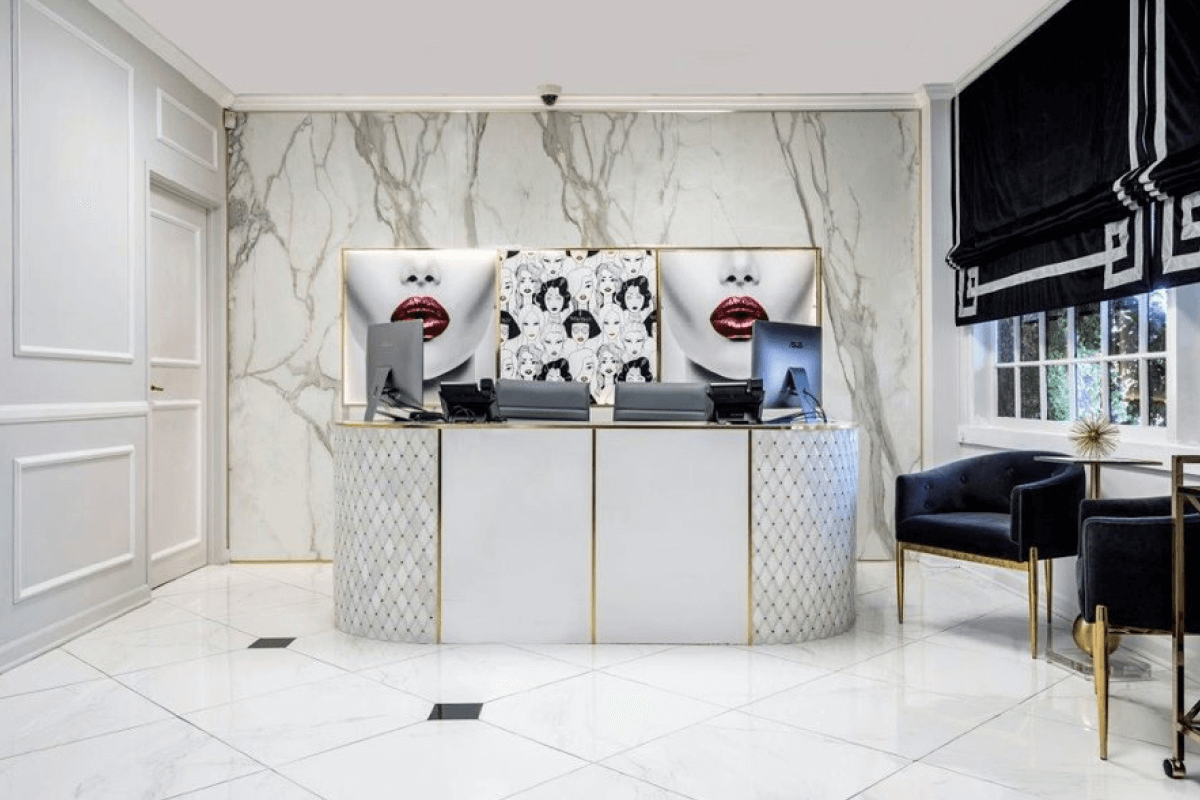
At this point you probably have many questions — how much does Restylane or Juvéderm cost? How much do RHA fillers cost? Which one will last longer? You can visit our website to learn more and even find the answers to many of your questions. However, for a more customized approach, call us to schedule a personal consultation.
